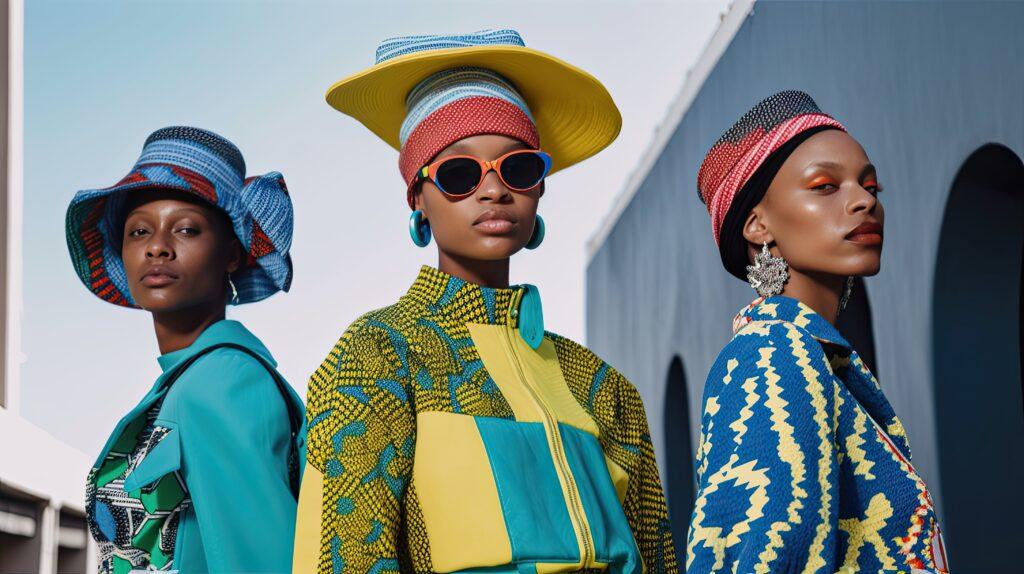As a fashion enthusiast, I have always been fascinated by how cultural influences shape the fashion industry. From the traditional textiles used in clothing to the way fashion is marketed, there is no denying the impact that cultural influences have on the fashion world. In this comprehensive guide, I will explore the historical context of cultural influences on fashion, how globalization has impacted it, as well as the role of diversity and inclusion in the industry.
Introduction to Cultural Influences on Fashion Trends
Fashion trends are not created in a vacuum. They are often influenced by a variety of cultural factors such as art, music, and politics. These cultural influences shape the way fashion designers create their collections, as well as how consumers choose to dress themselves. For example, in the 1960s, the youth culture movement influenced fashion with its bold colors, psychedelic patterns, and free-spirited designs.
Today, fashion is still heavily influenced by cultural trends. From the rise of streetwear to the popularity of sustainable fashion, cultural influences play a significant role in shaping the fashion industry. Understanding these influences is essential for both fashion designers and consumers alike.
Historical Context of Cultural Influences on Fashion
The influence of culture on fashion is not a new phenomenon. Throughout history, fashion has been shaped by the cultural norms and values of the time. For example, during the Renaissance period, fashion was heavily influenced by the art and architecture of the time. The elaborate and ornate designs of the Baroque and Rococo periods were also reflected in the fashion of the time.
During the 20th century, cultural influences on fashion became even more pronounced. The flapper style of the 1920s, for example, was heavily influenced by the changing roles of women in society. The 1950s saw the rise of the rock and roll subculture, which influenced fashion with its leather jackets and denim jeans.
Cultural Influences on Fashion in Modern Times
In modern times, cultural influences on fashion are more diverse than ever before. With the rise of social media and global travel, fashion designers and consumers alike are exposed to a wide range of cultural influences. From traditional textiles to streetwear, these influences can be seen in everything from haute couture to fast fashion.
One example of a cultural influence on fashion is the rise of sustainable fashion. This trend is influenced by a cultural shift towards environmentalism and a desire to reduce waste and promote ethical production practices. Another example is the rise of streetwear, which is influenced by hip-hop and skate culture.
Examples of Cultural Influences on Fashion Trends
The influence of culture on fashion can be seen in many different ways. One example is the use of traditional textiles in clothing. For example, the use of African wax prints in fashion has become increasingly popular in recent years. These prints are a cultural symbol of African heritage and have been embraced by fashion designers around the world.
Another example is the use of religious symbols in fashion. The cross, for example, has been used in fashion for decades as a symbol of rebellion and counterculture. More recently, the hijab has become a symbol of fashion and identity for Muslim women around the world.
The Impact of Globalization on Cultural Influences in Fashion
The rise of globalization has had a significant impact on cultural influences in fashion. With the spread of information and the ease of travel, fashion designers and consumers are exposed to a wider range of cultural influences than ever before. This has led to a blending of cultures in fashion, with designers incorporating elements from different cultures into their designs.
However, globalization has also led to concerns about cultural appropriation in fashion. When elements of one culture are taken and used by another culture without proper understanding or respect, it can be seen as disrespectful and offensive. This has led to a growing awareness of the importance of respecting cultural traditions and values in fashion.
Cultural Appropriation and its Impact on the Fashion Industry
Cultural appropriation is a complex issue in the fashion industry. While some argue that cultural appropriation can be a form of cultural exchange, others argue that it is disrespectful and can perpetuate harmful stereotypes. For example, the use of Native American headdresses as a fashion accessory has been widely criticized as disrespectful and offensive.
To address these concerns, some fashion designers are taking steps to incorporate cultural elements into their designs in a respectful and meaningful way. This can involve working with artisans from different cultures or partnering with organizations that promote cultural understanding and respect.
The Role of Diversity and Inclusion in the Fashion Industry
The importance of diversity and inclusion in the fashion industry cannot be overstated. Fashion should be accessible to everyone, regardless of their race, gender, or socioeconomic background. Unfortunately, the fashion industry has a long history of exclusion and discrimination.
To address these issues, many fashion industry leaders are taking steps to promote diversity and inclusion in their companies. This can involve hiring more diverse models, promoting diversity in advertising, and working with diverse designers and creatives.
How Cultural Influences Affect Fashion Marketing and Advertising
Cultural influences also play a significant role in fashion marketing and advertising. Advertisements and marketing campaigns often reflect the cultural trends of the time. For example, in the 1990s, fashion advertisements often featured supermodels in glamorous settings. Today, fashion advertisements are more likely to feature diverse models in everyday settings.
Fashion brands also use cultural influences to market their products. For example, many fashion brands incorporate traditional textiles and patterns into their designs to appeal to consumers who are interested in cultural fashion trends.
Fashion Industry Responses to Cultural Influences
The fashion industry is constantly evolving in response to cultural influences. As cultural trends change, so do fashion trends. This can be seen in the way that fashion designers incorporate cultural elements into their designs, as well as in the way that fashion is marketed and advertised.
To stay relevant, fashion brands must be aware of the cultural trends of the time and incorporate them into their designs and marketing strategies. This can involve working with diverse designers and creatives, as well as embracing sustainable and ethical production practices.
Conclusion: The Importance of Understanding Cultural Influences on Fashion Trends
In conclusion, cultural influences play a significant role in shaping the fashion industry. From the traditional textiles used in clothing to the way fashion is marketed, cultural influences are everywhere in fashion. Understanding these influences is essential for both fashion designers and consumers alike. By embracing diverse cultures and promoting understanding and respect, the fashion industry can continue to evolve and stay relevant in an ever-changing world.
As a fashion enthusiast, I encourage you to explore the cultural influences on fashion trends. By embracing diversity and promoting understanding and respect, we can create a more inclusive and sustainable fashion industry.













